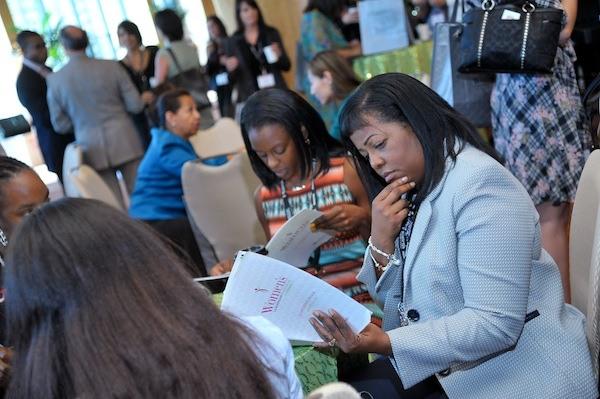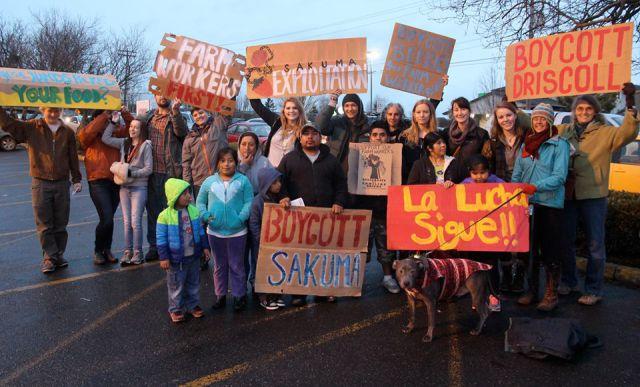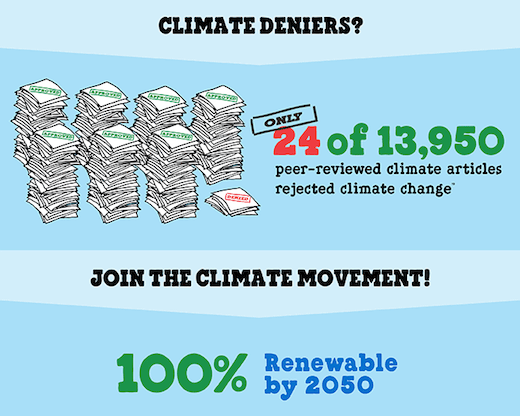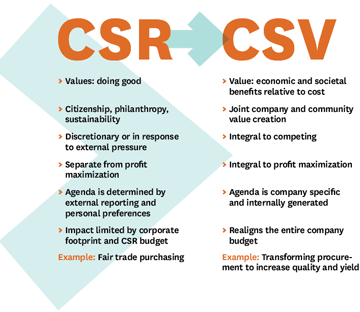Minneapolis -- the Healthiest City in the U.S.


Despite the harsh winters that to this California girl equate to Siberia, Minneapolis is the healthiest city to live in the U.S. Livability, the organization that works with communities to develop content marketing programs, ranked the Top 10 Healthiest Cities. The Minnesota city with a population just over 400,000 made the No. 1 spot on the list.
When ranking cities for the list, Livability considered two aspects. The first is health care in terms of access, quality and affordability. The second is how a city both promotes and enables a healthy lifestyle. To rank cities, the organization looked at data from the County Healthcare Rankings and spending data from Esri. In addition, Livability analyzed things like the adult obesity rate, the percentage of residents with access to healthy food, the number of hospitals and the ratio of doctors to residents.
Here's the full list:
- Minneapolis, Minnesota
- Cambridge, Massachusetts
- Madison, Wisconsin
- Miami, Florida
- Bridgeport, Connecticut
- Arlington, Virginia
- Santa Ana, California
- Honolulu, Hawaii
- Fort Collins, Colorado
- Yonkers, New York
Why Minneapolis ranks at the top
Given the criteria and data Livability looked at, why did Minneapolis make the top spot? The answer can be summed up in three words: its park system. Or in the words of the list: “Few cities are as devoted as Minneapolis to providing outdoor amenities to residents.” The park system covers almost 17 percent of the city. Last year, the Trust for Public Land ranked the park system the best in the country, the second year in a row it made the top spot.
Minneapolis has also been ranked as one of the country’s fittest cities. In 2013, the American College of Sports Medicine named the city the fittest metropolitan area in the U.S. in its American Fitness Index. In 2014, it made the No. 2 spot in the Index.
Minneapolis is more than just a fit city. It also ranks high in healthy behaviors. In Hennepin County, which includes Minneapolis, less than 14 percent of residents smoke, and over 87 percent regularly participate in physical activities. The city has a high ratio of doctors, dentists and mental health care providers. Residents have access to 19 acute care hospitals within 60 miles. Less than 11 percent of the city’s residents are uninsured and the majority get annual checkups and health screenings, but they spend 16.8 percent less than the national average on health care related services and goods.
Minneapolis is also filled with clean air and unpolluted drinking water. It made the Smart Home Design Center’s list of the 10 cleanest cities in the world at the No. 5 spot. SHDC cites several ways the Midwestern city keeps its air so clean, including reducing the amount of exhaust from its light rail systems.
If this Cali girl wanted to relocate across the country, she would put Minneapolis at the top of her list. It would be worth braving the harsh winters to live in a healthy, fit and clean city.
Image credit: CameliaTWU
What Does Women's Leadership Mean in 2015?


Nearly a century after women were granted the right to vote and a half century after the Equal Pay Act, the United States has yet to have a female president. And in Fortune 500 companies, women hold less than 20 percent of board seats and a “shockingly low” 4.8 percent of CEO positions, says Leah Seligmann, chief sustainability officer at NRG Energy.
As TriplePundit kicks off our new series on women’s leadership, we posed this question to some of the women we admire most: What does women’s leadership mean in 2015?
Going beyond gender equality
While Seligmann thinks we have made significant progress in gender equality, she challenges us to go further:
“… This dearth of female leaders in traditional leadership roles is particularly troubling because it is not the result of a lack of qualified women, but of society’s inability to recognize and reward the full potential of half the population. Justice Ruth Bader Ginsberg was recently asked when we would have enough women on the Supreme Court, and she responded, ‘When there are nine.’ Her comment was met with surprise, but a court made up of 100 percent men is hardly seen as unusual.Women have made great strides in the past 100 years, but the aim has always been equal treatment, and it is my belief that we have set the bar too low. We owe it to ourselves and future generations of young women to push beyond the concept that we can be ‘as good as’ to truly take our position as global leaders.
My hope for 2015 is that this is the year that we actually shatter the glass ceiling to grab the accolades and leadership roles that women deserve.”
Challenge companies on what corporate leadership means
Suzanne Fallender, director of the Global Girls & Women Initiative for Intel, has another challenge, but this one is for companies:
“To me, [women’s leadership in 2015] means continuing to advocate for and invest in changes that support advancement of women within their organizations and industries, by addressing issues of unconscious bias and enlisting the support of both women and men in developing solutions.It also means challenging companies and business leaders to reexamine the leadership role that the private sector can play in empowering girls and women globally. From strategic initiatives and partnerships [that] expand access to education and technology, to programs supporting entrepreneurship and supply chain diversity, I think there is a largely untapped opportunity for companies to invest in women’s empowerment in order to drive both positive social impact and long-term business and economic value.”
Many women we spoke with agreed that it’s time to embrace and harness the skills and strengths that are unique to women and see them as valuable assets we can bring to our work, rather than a feminine flaw or frailty we need to bury when we’re in the office.
Embracing "feminine" qualities
Paulette Frank, vice president of sustainability for the Johnson & Johnson Family of Consumer Companies, says:
“Women’s leadership isn’t about gender. It’s about being yourself – your whole self. For me, this meant realizing that my emotions aren’t a weakness I should ‘hide’ but an asset I should share.At a time when authenticity and inclusivity set leaders apart, I’ve learned being emotional is as valuable as being analytical – that the creative, feeling side of my brain is as important to my leadership effectiveness as the logical, thinking side of my brain. At the end of the day, with the magnitude of social and environmental challenges we face, we can’t afford to leave any tool in our tool box unused – especially the ones that make us human.”
Nancy Mancilla, cofounder of corporate social responsibility consulting firm ISOS Group and ISOS Center for Social Responsibility, agreed.
“Why aren’t there more women in leadership roles in politics and organizations? After all, we have an innate motherly instinct and tend to have a personal connection with our colleagues; we are more solutions-oriented and natural multitaskers, yet we are held back when we leave to raise children, attempt to climb the professional ladder and when equal compensation is concerned. We're not afraid to roll up our sleeves and get to work, nor are life's mysteries too farfetched for us to sort out.”
No more apologies
And women’s culturally-ingrained tendency to over-apologize for these strengths? That should not happen anymore, says Cecily Joseph, vice president of corporate responsibility at Symantec.
“Women’s leadership in 2015 means we are no longer just satisfied with having a seat at the table. We are not apologizing, but rather see value in the unique and diverse perspectives we as women bring to the table.”
Women's leadership is leadership
Other women pointed out how support from men is critical in attaining gender equity and how perhaps someday we can move toward a world where we talk about leadership in general – not in terms of women’s or men’s.
Shannon Schuyler, principal and corporate responsibility leader for PwC and president of the PwC Charitable Foundation, says:
“Women's leadership in 2015 will be disruptive, agile and purpose-driven. We need to see more women supporting other women and elevating one another in a two-way learning experience. It will also be increasingly important to include men in the conversation -- not isolate or vilify them. Female leaders bring their whole selves to their careers. We are complex individuals, and that's what positions women for leadership.”
Annie Longsworth, founder of sustainably-minded communications firm The Siren Agency, says:
“Leadership in 2015 should not be defined by gender, but by ability to lead successful enterprises that prioritize profit, employee well-being and making a positive impact. Unfortunately, at this point, women are still under-represented on boards and as CEOs, and women are still paid less than men for most jobs.Given the effort being made by both men and women to raise awareness of the issues, however, I am hopeful that the discussion will shift away from 'women as leaders' to one around leadership, period.”
We have a long way to go until we reach the genderless, more merit-based concept of leadership that Longsworth hopes for. But before we see more women CEOs and perhaps a nine-woman Supreme Court, as Ruth Bader Ginsberg proposed, Meghna Tare, executive director of the Institute for Sustainability and Global Impact at the University of Texas at Arlington, offers this advice for women wishing to break through that glass ceiling in 2015 and beyond:
“Be true to yourself: Women’s leadership in the world of millennials rides on the success wheels of authenticity, and communicating the vision and values in a way that shouts, 'I care.' Blending those values with your unique goals, ambition and qualities like empathy can be very motivating and efficacious. Leadership lives at the intersection of that spark and values.”Stay tuned as we explore the concept of leadership, values and authenticity through the next few months in the lead-up to the Women’s Leadership Conference sponsored by MGM Resorts Foundation.
Image credit: MGM Resorts Foundation
Farmworkers’ Union Calls for Boycott Against Driscoll’s


It was not that long ago when buying berries meant settling for canned or frozen berries, but Driscoll’s has changed the way berries are grown and distributed and become a very successful company as a result. Located amongst the Santa Cruz County strawberry fields around Watsonville, Driscoll’s blueberries, raspberries and blackberries can be found across the United States and overseas. But as the demand for fresh berries, and plant varietals that can grow in regions otherwise hostile to berry growing, are on the increase, so are disruptions in the company’s supply chain. A farmworkers’ union in Washington State has recently called for a consumer boycott of the company’s products, citing unfair labor practices by one of Driscoll’s suppliers.
According to farmworkers at Sakuma Berry Farm in Burlington, Washington, this important supplier of Driscoll’s has been paying unfair wages and substandard working conditions.
The union advocating for the workers, Familias Unidas por la Justia (FUJ), has decided to play the boycott card in order to pressure Driscoll’s to use its buying power to ensure that farmworkers employed at Sakuma score better wages, housing and working conditions. The union also calls for an end to what it describes as wage theft, unfair piece rate agreements and verbal abuse during working hours. Furthermore, FUJ has complained that the company had applied for H-2A seasonal visa workers in order to avoid hiring any local issues. Citing the support of 10,000 consumers who are in agreement with the Union, FUJ has called upon Driscoll’s to honor its “commitment to community and sustainability.”
Driscoll’s, a privately-held, family-owned company, indeed makes claims about sustainability, though its web site is very vague about environmental issues and makes almost no mention about its work environment or supply chain. The lack of transparency hardly helps Driscoll’s with making its case on this conflict, and the company also makes no mention of the controversy over the boycott.
Update: Driscoll's contacted us to share a statement with their position on farmworker wages and inviting the Fair Worker Project Driscoll HQ for a meeting to discuss the issue.
Sakuma, however, categorically denies all of FUJ’s allegations. The company claims it pays about US$12 an hour, which is even higher than Seattle’s living wage—and employees supposedly can become eligible for benefits such as paid vacation, health insurance and even participation in the firm’s 401(k) program. Sakuma also says it has not laid off any workers since 2013, with the exception of Ramon Torres, FUJ’s president and former company employee. According to the company, Torres was fired because of an arrest over alleged domestic abuse against his wife. Finally, in contrast to the union’s demands, Sakuma claims it had negotiated in good faith, but that FUJ left the talks.
Meanwhile, one Bellingham co-op has supported the boycott, citing the hostile work environment within Sakuma and a settlement the company paid over wage theft litigation. Other stores have joined the boycott as well. Recently farmworkers have reported that packinghouse workers have boxed berries in Driscoll’s containers instead of Sakuma-branded cases, which instigated FUJ to start the boycott. FUJ is also calling for a boycott against Haagen-Dazs and Yoplait for their ties with Sakuma.
For Driscoll’s and other companies that find problems within their supply chains, the lesson is clear: address the problem immediately, be transparent and work with the supplier to address the issue. The issue may not reach far beyond the Pacific Northwest, but the old web links will linger and be found by consumers researching Driscoll’s in the future as more of them will be vetting the companies from which the purchase their favorite products.
Image credit: Boycott Sakuma Berries
Rethinking the Grid: Personal Power Stations, in Your Garage


Editor's Note: This post originally appeared on the IEEFA blog.
By Deborah Lawrence
The electricity grid is an aging beast, but not so old that it’s frozen in time.
The grid as we know it typically operates by tapping several different power sources and by keeping some back-up on the side just in case. Oddly enough, it runs with virtually zero storage capacity, but that’s only because large amounts of electricity are difficult to store. This is a technological challenge, to be sure, but that’s only because it’s never been seriously addressed.
Until now.
Today, entrepreneurs worldwide are raising a question that goes something like this: What if we decided to think outside our box and imagine that instead of myriad electrical wires joining our houses, we got our household electricity from rooftop solar panels instead? And what if those panels pumped electricity into an array of batteries in our garages next to the workbench? Or into an electric vehicle that had the capacity to store that power and send it back into our homes?
The energy requirements of a utility company are vastly different than the needs of a house, of course, but we’re not talking about utility companies. What we’re talking about is what makes sense: Tackling the storage challenge on a smaller-than-utility scale — house by house.
GTM Research is already on to this notion and has said recently that it expects home battery storage to grow into a $1 billion industry by 2018. That’s only three years away, but the trend is already taking root as small storage systems come online now. Solar City, one of the big U.S. solar-panel installers, offers battery storage for home use now. Here’s Solar City’s pitch: “A cost-effective, wall-mounted storage appliance that is small, powerful and covered by a long lasting full 10-year warranty.”
What’s not to like about a new front in energy technology that turns homes into micro-grids?
It’s not going to happen en masse overnight, and there will still be a need for large-scale utility generation. Industrial users, especially, are probably going to be better off relying on a traditional grid system. And for renewable energy to take hold on a truly massive scale, too, viable battery storage is needed, which is is where technology is making exciting strides. While lithium-ion batteries have taken center stage, other less sexy technologies are being employed with success. If lithium-ion batteries are the Teslas of the energy-storage world, flow batteries are the pick-up trucks: hardworking and reliable. Lead acid batteries, too, are gaining traction.
Notes of interest on this point — and related thoughts — from Navigant Research:
- “Flow batteries have been shown to excel at long-duration energy storage applications and advanced lead-acid batteries have proven to be excellent performers in power-intensive applications.”
- “The annual revenue of cell sales for advanced batteries for utility-scale applications will grow from $221.8 million in 2014 to $17.8 billion in 2023.”
- “The annual energy capacity of advanced batteries for utility-scale energy storage applications will grow from 412 megawatt-hours in 2014 to more than 51,200 megawatt-hours in 2023, at a compound annual growth rate of 71 percent.”
Meanwhile, BMW is partnering with two other big companies, Bosch and Vattenfall, to explore how to repurpose used electric-vehicle batteries into grid-storage packs. (An EV battery apparently can have as much as 70 percent of its storage capacity still intact after its automotive life.) Nissan has entered into a deal with Endesa, a Spanish utility behemoth, that lets motorists sell the unused power stored in their electric vehicles back into the grid.
The point is that the grid as we know it doesn’t have to be run the way it has always been run. And the innovation that is taking place now suggests that in the not-so-distant future it won’t be the same beast that it is today.
Image credit: Flickr/Mike Linksvayer
Deborah Lawrence is an IEEFA energy consultant and founder of Energy Policy Forum.
California Dreaming: You Can't Have Cheap Water Forever


By Raj Aseervatham
“You guys in Australia have water?”
It’s an odd question from a Los Angeles cab driver, I muse, but I answer him affably. I tell him there is enough for showers and cups of tea, and that the people of Sydney are happy and they generally smell okay, except at 6 p.m. on crowded buses or trains.
“We got one more year then we’re out of water in California,” he tells me grimly.
We’re about two miles from the Pacific Ocean on this fine Sunday. And when my Qantas flight landed this morning the reserve still looked pretty full, so his dour comment isn’t entirely accurate. But I get what he’s saying. California is in a bit of a drought-induced crisis. The tone of newspapers borders on the hysterical, and is generally unhelpful. So, the papers are basically doing their job just fine.
"California has one year of water left," screams the Los Angeles Times.
Climate change aside, we still have to solve that problem. It’s a crisis not because molecules of H20 have mysteriously vanished but because the cheaper sources of H20 are depleting or have depleted. As Leon Kaye recently pointed out in an article on TriplePundit, the state needs to get serious about a long-term water plan.
So, when people say there’s no more water, what they mean is there’s not a lot of cheap water left -- which means water prices are going up.
Shorter showers aren't the answer
This isn’t great news for LA, whose water use has reduced from 172 gallons to 129 gallons per person, per day since 1980 (Newsweek). My cab driver, one of the 3.9 million people in LA who presumably contributes to this excellent per-capita water reduction with his efficient showering and clever lawn-watering practices, deserves to be miffed. From his viewpoint, he tells me, his sustainable behavior is not being rewarded – it’s being punished.
The truth is, it’s just being ignored. Most of California's water is used for power generation and irrigation. This is the overall trend in the U.S. -- as you can see below, courtesy of the USGS in their 2014 publication Estimated Use of Water in the United States in 2010. That means that all of us saving 10 percent on our showers and lawn watering has less than a 1 percent impact all round. Bummer, dude.
For this post, I’ll leave out the obvious discussion about coal-fired power stations, those thirsty little pesky carbon emitters (and you'll be glad to know that in California most of their water is from saline sources). Let’s look at irrigation, because it illustrates an important point.
Water price structures and agriculture
Irrigation is used by Californian farmers to provide most of America’s lemons, nectarines, broccoli, plums and a few other fruits and vegetables, as well as a healthy supply of dairy products. It’s productive use. The subsidizing logic is that, with such an input to U.S. agricultural productivity, water prices for farmers should be low. Fair enough, bring on a discount.
So in agricultural regions, Californian users pay about 0.007 cents per gallon. For agriculture, the cost is calculated in acre-feet. (One acre foot is the amount it takes to put an acre of land under a foot of water.) This sounds like a unit of measurement our Biblical friend Noah would have used. There isn’t much incentive to use less agricultural water, at these costs.
In Fresno, California, according to the New York Times, the average household uses around 400 gallons of water per day pays 0.24 cents per gallon, which is about 38 times the unit cost of water for agricultural producers. So, maybe cost structure is one part of the problem. (And yes, a higher water cost structure in agriculture will likely flow on to many other commodities, if you’ll pardon the pun).
What about water use and frugality? Even if Californians did use less water, there is another insidious problem: The aquifers and rivers that provide fresh water depend on rain to top them off, and there hasn’t been much of that in the last few years. If that’s a continuing trend, my cab driver ain’t seen nothing yet. So, an excessive reliance on cheap traditional resources that are inexorably depleting is another issue to tackle.
Facing facts about water pricing
There was never really a question about whether water costs should rise significantly. The only question is when and by how much. For example, desalinating Pacific Ocean water might hike unit rates twofold or so. For most residential customers, this would add the cost of a daily iced latte to their water bills.
Arguably, the later we leave our access to more costly sources, the more the increase in cost will be, and the more regrettable the legacy we leave behind, with depleted aquifers and weaker rivers -- our cheapest sources – taking the brunt of our poor past decisions. It’s not a human right to have near-free access to water. It is probably our right to have affordable access to water, and this total cost is made up of two things – how much we use, and where we get it from. Both are within our power to considerably influence.
You, like me, will probably point out that our water costs have already been going up, at eye-popping rates. Global Water Intelligence estimates that recent per-unit water prices have increased by between 7 and 8 percent annually, but a lot of that is due to the upgrading of aging infrastructure, not smarter water sourcing. We’ve been largely paying to solve a servicing problem, not a sustainability problem. D’oh.
Albert Einstein, who by all accounts was a pretty smart person and a canny philosopher outside of his chosen field of quantum physics, once said: “We cannot solve our problems with the same thinking we used to create them.”
For the better part of a century, we’ve used reasonably static thinking all around the world: first believing in the infinite elasticity of scarce resources like cheap fresh water, and then hoping that feel-good initiatives like shorter showers create the quantum of water-smart impacts we need.
California is, unfortunately for it, becoming perhaps our planet's first poster-child for the outcomes of this type of uninspired thinking about water. That's a Sigalert for a better water policy, bro.
Image credit: 123RF/Chris van Lennep
Dr Raj Aseervatham has worked extensively in Asia, Africa, Europe and the Americas in various roles in government, consultancy and private industry. He is a Fellow of the Institution of Engineers Australia and a graduate of the Australian Institute of Company Directors.
Ben & Jerry’s Tesla Road Trip for Climate Change


In the late 1980s, Ben & Jerry’s authored a social mission that, among other things, established “a continuing commitment to incorporating wholesome, natural ingredients and promoting business practices that respect the Earth and the environment.” The company's latest campaign is a cross-country tour, called Save Our Swirled, in a tricked-out Tesla serving free ice cream and encouraging people to get involved in the fight against climate change.
In 2013, I visited Ben & Jerry’s with a group of food bloggers and met with co-founder Jerry Greenfield and CEO Jostein Solheim. Solheim talked about his reluctance to broadcast the ice cream company’s good works for fear that they may get lost in the din, but the environment is one of several areas that Ben & Jerry’s has always advocated for and set business goals to reduce their carbon footprint. For The Save Our Swirled campaign, the ice cream company is using a completely electric Tesla, with a freezer for a backseat, to show its commitment to clean energy (and feeding people exceptional ice cream).
Another aspect of Ben & Jerry’s that emerges when talking to employees is the company's loyalty to its suppliers around the world. The company not only subscribes to fair trade practices, but it also works toward long-term relationships that benefit suppliers as well as their communities. As the effects of climate change are felt in global food production, the ice cream company is seeing them firsthand as its suppliers’ crops are damaged by storms and drought. The company recently put chocolate, nuts and coffee on its list of endangered ingredients as production declines.
For this campaign, Ben & Jerry’s has partnered with Avaaz, a 5-year-old activist network that was behind the largest worldwide climate change march in history in September 2014. Ben & Jerry’s has a large and engaged following, and the company is hoping to convert that passion into action against climate change. Chris Miller, Ben & Jerry’s social mission activism manager, explained more about the effort:
“We believe a large, diverse, and global movement of citizens willing to take action is necessary if the planet is to avoid the worst impacts from climate change … Our tour is only one part of our overall campaign for climate justice.This is the first time Ben & Jerry’s has run a global campaign across more than 30 of its international markets. In addition to the tour, we will be engaging fans and citizens around the world through all of the channels our company has, including scoop shops, events, online, digital, and social media platforms among others.”
The company’s goal by the end of the tour is to have 500,000 fans sign up with Avaaz to help put pressure on world policymakers to impose regulations that will move our world toward using clean energy.
“We are asking people as part of the global campaign to sign Avaaz’s petition calling on policy makers around the world to support a transition to 100 percent clean energy. By signing that petition our fans become members of Avaaz. The 100 Percent Clean petition is just the first of many possible actions and Avaaz will keep citizens around the world engaged and active on climate change throughout 2015 and beyond,” Miller said.
Why now? In many ways, it is a perfect storm of worsening conditions, a need for change and the looming COP21 Climate Change summit in Paris at the end of 2015. The campaign aims to rally Ben & Jerry's fans and bring more attention to the need for clean energy this year in the hopes that it will make a difference.
“Anyone watching the debate around climate has their eyes on the U.N. Climate summit in Paris. It our hope that citizens around the world will hold policy makers accountable for delivering a framework in Paris that commits the world to stabilizing climate change to well below 2 degrees Celsius. But we also understand that Paris is just one stop on the long road to climate stabilization,” Miller said.
In addition to encouraging fans to take action, Miller explained that the company itself is also fighting climate change in three different ways.
“First, we’ve recommitted ourselves to a more aggressive set of GHG reduction goals across our entire business. Those goals are based on the level of reductions required to achieve the [2 degrees Celsius] target in both the medium and long term. The second is our support for a progressive policy agenda on climate. The third is our commitment on the advocacy side as part of our Save our Swirled Campaign.”
Save Our Swirled kicked off on April 1 when the Tesla glided into San Diego. Join the team for free ice cream and some inspiration. On April 16, they head to Los Angeles. Check the tour dates to see if they come to a town near you. Track their journey at #saveourswirled.
image and info graphic courtesy of Ben & Jerry's.
Save the Waves: A Look at Endangered Coastal Environment


By Scott Huntington
In response to cries of “save the waves,” the average citizen would likely ask: “From what?” The oceans are unfathomably large environmental juggernauts. Surely waves will continue to roll into shore just as they always have, right?
Wrong.
Coastal environments, especially the surf zones, face great peril. Many great waves are already extinct, and more may follow if no one intervenes.
The economic impact of surfing
The average citizen may think that the surf zone only affects surfers. Maybe it’s time those wandering, long-haired hippies go get a job instead of loitering at the beach.
Cinema continues to present surfers in a very cliché and outdated manner, which in turn reinforces the mental picture the average citizen carries of surfers. However, modern surfers exceed this limited stereotype. In the U.S. alone there are an estimated 3.3 million surfers, covering all occupations, age groups and walks of life. In fact, surfing has become somewhat of a status sport, a way of showing off that you have money to spend on a dramatic, athletic hobby. Surfing is also a grueling sport well capable of drawing spectators to its competitions. All sorts of new variations are popping up, including bodyboarding, boogie boarding and the ever-growing sport of skimboarding.
What’s more, even if every surfer did look like the Hollywood stereotype, the fact remains that surfing makes huge contributions to coastal tourism. A study of Mavericks Surf Break in Half Moon Bay, California, entitled The Value of a Wave, found that surfing brought in $23.8 million annually. That’s $23.8 million annually for one location. Imagine that figure multiplied by the number of coastal surf locations, and you have an astronomical contribution to the world’s tourism economy.
When waves are destroyed – often by altering sand flow patterns – the draw for surfers is destroyed as well. A population that is usually taken for granted suddenly takes on new significance when local businesses discover just how much of their revenue was driven by surfers and surfing fans. As the Mavericks Surf Break study showed, surfing – or the lack thereof – has a concrete economic impact.
Endangered waves
So, if surfing is so lucrative for local coastal businesses, why are surf breaks at risk?
The answer is twofold: lazy waste disposal and uninformed business decisions.
Humans have been polluting the world’s water resources for thousands of years. Unfortunately, as humanity makes industrial, chemical and technological progress, the quantity and toxicity of aquatic pollution skyrockets.
Marine pollution is at a critical point. Oil spills may grab headlines, but it is the everyday chemical runoff and casual waste that really adds up. Sewage, factory waste and pesticides are merely a few of the pollutants that are regularly pumped into the ocean. The resulting chemical imbalance destroys ecosystems and is responsible for the more than 400 known dead zones – areas that cannot support marine life – in Earth’s oceans. If that weren’t enough, solid waste chokes waterways and masses together to form a Texas-sized floating section of garbage in the Pacific Ocean.
This unchecked pollution is killing marine life and contributing to the destruction of economically vital surf breaks.
Pollution and development work hand-in-hand when it comes to destroying precious coastal environments. Development naturally leads to more pollution, but it also contributes major, damaging change all on its own.
The construction of seawalls, marinas, harbors and other coastal structures can have catastrophic effects on sand flow patterns, which in turn affect waves. A lack of information and a lack of vision are often the two biggest contributors to bad construction decisions. Often those deciding where to build do not know that they may irrevocably change wave patterns, nor do they realize the potential economic impact of wave loss.
Fighting to keep making waves
Save the Waves Coalition is just one of the nonprofits working hard to protect these precious coastal environments. The nonprofit’s goal is to “create a world where the coastal environment in general and surfing coastline in particular is treated as a precious natural resource, and protected accordingly for the benefit of the greater community.”Save The Waves works for the preservation of coastal environments through five main avenues:
- Education: STW seeks to educate the public about the value of these environments.
- Research: STW seeks to arm decision makers with concrete data regarding the economic and environmental importance of the waves.
- Media: STW creates documentaries to aid in their education of the public.
- Enshrinement Programs: STW seeks to proactively preserve coastlines rather than waiting for a threat to arise.
- Partnerships: STW partners with both local and international groups in order to best protect the surf zones and coastlines.
Of course, groups like Save the Waves can only affect change with public support. What will be your reason for joining the fight to protect endangered coastlines? Are you a surfer? A beach enthusiast? Will you fight to preserve marine life or to protect the social and economic value of the coast?
Image credit: 1) Outdoor Board Sports 2) ocean.nationalgeographic.com 3) savebastionpoint.org
Scott Huntington is a writer and blogger. Follow him on Twitter @SMHuntington.
Concentrated Solar Producer Abengoa Gets Serious about CSR


A worldwide leader in developing sustainable energy solutions – concentrating solar power (CSP) plants in particular – Spanish multinational Abengoa has garnered accolades for its commitment to social and environmental responsibility.
On March 23, the company's 'yieldco,' Abengoa Yield, became the latest company to be included in the NASDAQ Clean Edge Green Energy Index. On March 27, the Inter-American Development Bank (IDB) recognized Abengoa's Atacama 1 CSP plant in northern Chile by awarding the company an Infrastructure 360º Award “for its contribution to clean power generation.” More broadly, Abengoa for the third consecutive year has earned a place on the Ethibel Sustainability Index (ESI) Excellence Europe for its efforts to enhance sustainability as it pertains to the environment, human rights, community impact, business behavior, human resources and corporate governance.
Released on March 18, Abengoa's 2014 corporate social responsibility (CSR) report illustrates the company's broad-based efforts to directly and indirectly enhance social and environmental responsibility. Prepared in accordance with Global Reporting Initiative's (GRI) G4 guidelines, it reports on progress made during 2014. In addition, the report “addresses the major challenges facing the company and sets out new CSR targets for 2020."
Caring for climate
In 2014, Abengoa – in accordance with the United Nations Caring for Climate Framework – became one of the first 20 companies to agree to enact an internal carbon price. Management has established an initial price of €9 (~$9.81) per ton of CO2-equivalent on greenhouse gas emissions produced as a result of its activities.
Abengoa's 2014 CSR report also highlighted the use of funds raised by issuing “green” bonds this past September. The first investment-grade, high-yield green bonds to be issued in Europe, Abengoa raised €500 million (~$545 million) from international investors via the offering. The bonds' “green” credentials are set out by Abengoa in its eligible green projects criteria, as well as in a second opinion by CSR rating agency Vigeo.
Some €9.5 million (~$10.36 million) of the green bonds' proceeds have been invested in social development projects, Abengoa elaborated in its report. The company opened two new PEyC (People, Education and Communities) centers in South Africa and Sri Lanka. Abengoa PEyC centers are now up and running in nine countries.
Solar electricity 24 hours a day
Abengoa is also earning international recognition for the environmental and social benefits afforded by its CSP-energy storage development projects. Chile's Atacama region is home to the world's driest desert, as well as the bulk of Chile's copper and metals mining. In the Atacama town of Santa Elena, Abengoa is building the 210-megawatt Atacama 1 solar energy complex. According to Abengoa:
“The STE plant will prevent the emission of approximately 643,000 tons of CO2 every year. Furthermore, the construction, operation and maintenance of this plant will act as a catalyst for the socioeconomic development of the region, creating up to 2,000 direct jobs and a large number of indirect jobs, generating a network of services that will support economic growth in the area.”
Along with a 100-megawatt photovoltaic plant, the Atacama 1 CSP complex will employ solar tower technology with 110-MW capacity and a thermal storage system that uses molten salts to store as much as 17.5 hours' worth of solar energy. As such, it “will be the first STE complex for direct electricity production in Latin America,” Abengoa highlighted.
The IDB award publicly draws attention to Abengoa and Atacama 1 as leading examples of international private-sector efforts “to recognize and promote different ways of using sustainability practices in planning, designing, constructing and operating infrastructure projects.” Following rigorous review by an international panel of infrastructure and sustainability experts, IDB awarded Abengoa and Atacama 1 an IDB Infrastructure 360º Award “for its contribution to generating clean power, reducing atmospheric CO2 emissions and for the different aspects of the project designed to protect the environment and benefit the local community.”
Clean, renewable energy for South Africans
Similarly, in South Africa Abengoa's Xina Solar One will employ CSP technology and molten-salt energy storage to deliver renewable energy even when the sun isn't shining. On March 13, Abengoa announced it had closed financing on the 100-megawatt project. Deployment of Xina Solar One and other renewable energy projects in South Africa couldn't come at a more opportune time, as Africa's leading economy continues to struggle with power shortages and lack of grid access, as well as ecosystems degradation and environmental pollution associated with coal mining and use of fossil fuels.
Abengoa secured agreements for a total of $660 million in non-recourse project financing from leading international and national development lenders including the African Development Bank (AfDB), the International Finance Corporation (IFC), Industrial Development Corporation (IDC) and the Development Bank of Southern Africa, as well as local investment banks ABSA member of Barclays, Nedbank and Rand Merchant Bank.
South Africa's state utility Eskom has contracted to purchase Xina Solar One's output according to the terms of a 20-year power purchase agreement signed in late 2014.
*Image credits: 1), 2) Abengoa; 2) Harvard Business Review, "Creating Shared Value"
Lionfish Jewelry: A Market Solution to an Invasive Species


By Samantha Voncannon
The overwhelming lionfish population in the Gulf of Mexico and the Caribbean has become a top-tier threat to the environment, economy and sustainability efforts in countries like Belize. Native to the Indian and Pacific Ocean, lionfish were established as an invasion species in the Pacific and Caribbean Ocean in 1980, and have since become one of the greatest threats to sustainability of the coral reef and fisheries throughout the Caribbean.
With no known predators, lionfish populations are exploding, due to the species' ability to quickly reproduce and eat with abandon. They eat a wide variety of other ocean creatures that inhabit the Mesoamerican Coral Reef, the second largest coral reef in the world. Biodiversity in the ocean is quickly declining, and it is partly due to the lionfish.
The tourism industry counts for 25 percent of Belize’s gross domestic product, with another 18,000 Belizeans that are directly dependent on fisheries for their livelihood. The threat to the sustainability of the coral reef is critical to the economic stability of two-thirds of the Belizean population, in addition to the numerous other ecosystem services the coral reef provides.
Belize is also facing several social issues: The unemployment rate is 12.2 percent, and the poverty rate is 41.3 percent of the population. The educational level of the citizens is on average to the eighth grade level, which makes the labor force dependent on manual labor jobs, such as construction or agriculture. Traditionally the income of a family relies on male contribution to a household, with only 33 percent of the labor force being female.
A creative solution to multi-pronged problem
Several NGOs and nonprofits, such as Toledo Institute for Development and Environment, are now taking a market-based approach to battle the poverty in Belize, and also help with the coral reef conservation efforts. In addition to encouraging people to target the lionfish for food, a new social movement is teaching women how to use the tails of the lionfish to create jewelry.
The tail of the lionfish is considered waste among fishermen, as it is not edible. By using the tails of the lionfish for jewelry, each lionfish caught then gains 40 percent more monetary value. The upfront investment to produce jewelry requires a small amount of varnish to treat the lionfish tail and supplies for making the jewelry which gives the women a huge profit margin on each piece sold. Considering the marine life attracts so many tourists that visit Belize, the lionfish jewelry has a large market made up of people willing to pay a premium price.
Training for making the jewelry is also an easy process for the Belizean women. Training requires no formal education, can be done in a one-day workshop, and can also occur with a large group at one time. The lack of expensive equipment for making this jewelry is also fortunate; typically all that is needed is scissors and wire bending tools which makes training easily accessible.
This solution to combat the growing population of lionfish is a great example of a practical sustainable approach to a problem that touches many issues. By using the momentum of the targeted fishing of lionfish to conserve the coral reef, the social initiative to train women to make lionfish jewelry provides an income for families, reduces waste, feeds off an already successful initiative to expand the fishery market and increases a labor force -- all while empowering Belizean women.
Image credit: Flickr/tambako
Samantha Voncannon will graduate in May 2015 with her Master's Degree in Sustainability at Wake Forest University.
Back to Basics: When Ben & Jerry's Dropped rBGH


When two childhood friends, Ben Cohen and Jerry Greenfield, started Ben & Jerry's in 1978, they operated out of a renovated gas station in Burlington, Vermont. This small company with a big personality served up novelty products with witty names, such as Chubby Hubby, Cow Power and Holy Cannoli. Chubby Hubby was later renamed in 'Hubby Hubby,' to voice support for same-sex marriage.
This is just one of many examples of how Ben & Jerry's has created a rich brand personality by standing by its social and environmental values. The company embraces its three-part mission: to make fantastic ice cream, manage for sustainable financial growth and make the world a better place. This triple-bottom line approach to business allowed Ben & Jerry's to become what Brad Edmondson described as "one of the most iconic mission-driven companies in the world" in his book, "Ice Cream Social: The Struggle for the Soul of Ben & Jerry's." The company even occasionally put financial goals below its commitment to food safety.
The fight against rBGH
In 1989, Ben & Jerry's came out in opposition of recombinant bovine growth hormone (rBGH) or recombinant bovine somatotropin (rBST), developed by the agricultural biotech company Monsanto. This genetically engineered hormone is given to cows to increase milk production by up to 30 percent, but sadly it has numerous known negative effects on cows and humans alike.
Cows treated with rBGH show a significant increase in health problems, including a greater risk of lameness, udder infections (commonly treated with antibiotics) and serious animal reproductive problems. Some studies have also linked rBGH to concerning human health effects, including the development of certain tumors and prostate, breast, colorectal and other cancers.
Even though rBGH brought the price of milk down, Ben & Jerry's didn't want any of it. The ice cream men decided to continue to source milk from St. Albans Cooperative, a co-op with 450 family farmers. The ice creamery paid a premium to exclusively purchase milk from farms that took a pledge not to use rBGH. Ben & Jerry's showed its large personality when it took the bold step of not only sourcing milk without rBGH for its own products, but also publicly opposing its approval and use. The company made these decisions because it was the right thing to do, even if it raised the cost of production.
Stealing headlines with a social mission
But the socially-minded dessert makers wanted to have some fun along the way. The company decided to make a splash with its public opposition, too: "Ben & Jerry's launched their rBGH-free label on the same day that Monsanto made rBGH commercially available, and they basically hijacked the story," Brad Edmondson explained. "They gave reporters a quick and easy way to summarize the anti-rBGH discussion. They stuck to that and were very vocal about it, and the coverage was not what Monsanto hoped it would be."
Consumers bought into the branding so this decision did help to boost sales, despite the increased cost of production. But it wasn't all smooth sailing.The Attorney General of Illinois and several other states initially prohibited Ben & Jerry’s from mentioning rBGH on their product labels, which effectively meant the ice cream couldn’t be sold in those states. But Ben & Jerry’s fought back: they sued and won the right to sell products with the rBGH-free label everywhere. Ben & Jerry's sued the city of Chicago and the state of Illinois, later winning the right to label their products as rBGH-free.
"Ben & Jerry's used their reputation to take a political position that no one else could have taken as effectively," Edmondson said. "It was the use of brand equity to push social change, and it had only had been done a few times before and not on this scale. It was a huge wake-up call to people, and it helped get the socially responsible business movement into gear."
It is consistent with the Ben and Jerry's brand to be vocal and unstoppable when confronting issues the company is passionate about, which likely led to the demise of rBGH sales. By 2007, a mere 17 percent of U.S. cows were treated with rBGH, and the hormone was banned in many countries, including Canada, Japan, Australia and the European Union, showing Monsanto's product was a failure. According to Janice Neitzel, principal of Sustainable Solutions Group and a responsible animal protein consultant, consumer demand is fueling the sales of rBGH-free products.
“For close to a decade, U.S. consumers have said they don’t want growth hormones like rBGH in their milk, as evidenced by the tremendous sales growth of organic milk, which forbids the use of rBGH,” Neitzel said.
New parent company, same long-term sustainability values
Beyond rBGH, Ben & Jerry's food safety story has taken some interesting twists and turns. In 2000, the British-Dutch conglomerate Unilever bought Ben & Jerry's for $326 million, making it a a wholly-owned autonomous subsidiary. However Ben & Jerry's continues to trumpet social causes, even those that conflict with its parent company's position.
For example, Ben & Jerry's supports Vermont's efforts to label genetically modified organisms (GMOs), while its corporate parent does not. The negative PR threat of trying to silence outspoken Ben & Jerry's has allowed the company to maintain its corporate values, despite the difference of opinion.
Now Ben & Jerry's is producing flavors sourced with non-GMO ingredients, and encouraging consumer's right to know with a "labelizing it" campaign. Its sense of humor and values have not faded, and Ben & Jerry's continues to be the poster child for social responsibility, although some activists are skeptical given its corporate parent.
"Ben & Jerry's has recently completed a very extensive and arduous process that get GMOs out of all their ingredients, and there are something like 110 ingredients in their products," Edmondson said. "That was another enormous commitment of resources and time. The effect on the bottom line is debatable, but the effect on the brand is clear."
Ben & Jerry's has led the way as a brand with purpose, showing other companies that it's possible to do the right thing -- even if it isn't always the easiest financial call.
Image credit: Flickr/Qfamily